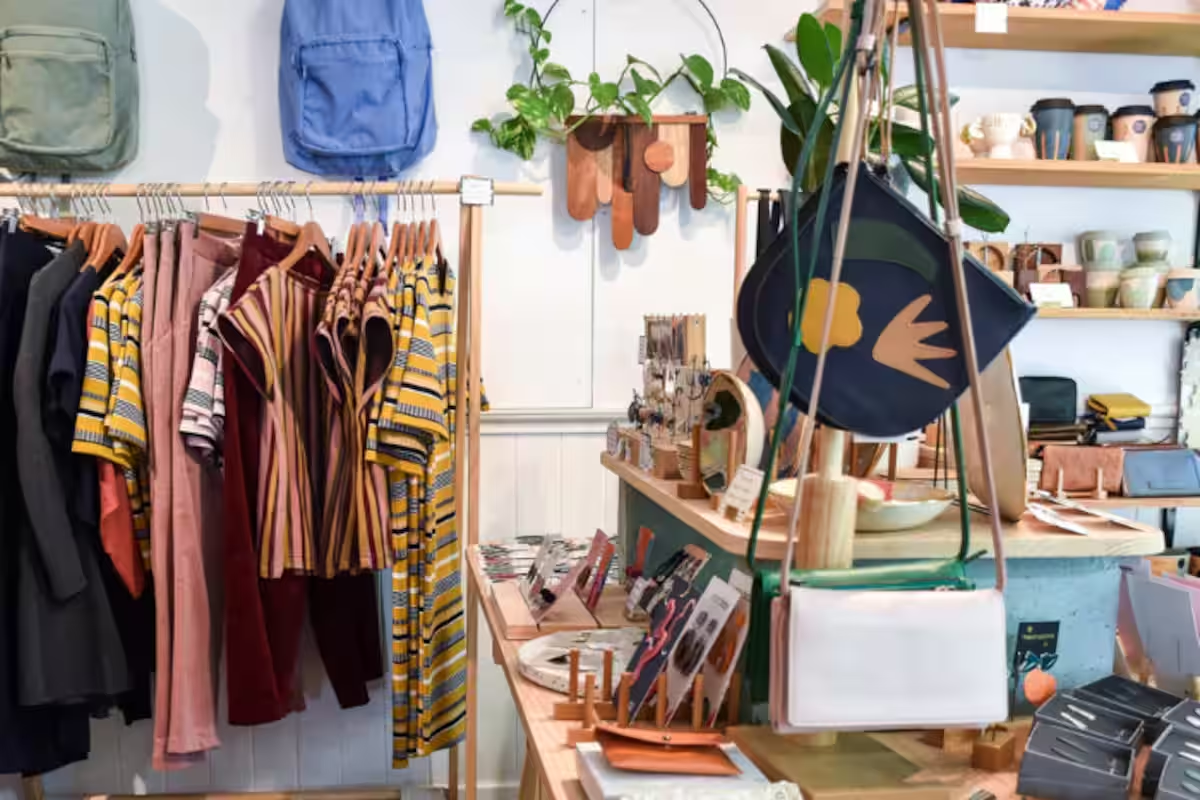In today’s world, fashion isn’t just about looking good; it’s about making choices that are kind to the planet. Fast fashion, once synonymous with affordable and trendy clothing, has now become a major environmental issue. From the exploitation of natural resources to the waste created by discarded garments, the fashion industry is one of the largest polluters on the planet. But here’s the good news: building an eco-friendly wardrobe doesn’t mean sacrificing style or comfort. In fact, it’s about making more mindful, sustainable choices that not only help protect the environment but also allow you to create a wardrobe you truly love.
Why Sustainable Fashion Matters
Before we dive into the steps of building an eco-friendly wardrobe, let’s take a moment to understand why this is so important. The fast fashion industry is responsible for significant carbon emissions, water waste, and landfill overflow. Each year, millions of tons of clothes are disposed of, contributing to the growing problem of textile waste. In fact, the fashion industry is the second-largest polluter globally, second only to the oil industry.
On top of the environmental impact, fast fashion often relies on unethical labor practices, with workers in some countries earning below minimum wage and working in unsafe conditions. So, when you make a conscious effort to support sustainable fashion, you’re not only helping the environment, but you’re also encouraging fair trade and better conditions for workers around the world.
But what does it mean to be a part of the solution? It’s not about turning your closet into a shrine of plain, uninspiring garments or breaking the bank. It’s about making small, intentional choices that help reduce the impact of your wardrobe on the environment. Let’s break it down.
1. Embrace the Idea of Slow Fashion
One of the most important steps in building a sustainable wardrobe is embracing the concept of slow fashion. Unlike fast fashion, which churns out thousands of new styles every week, slow fashion focuses on creating high-quality, timeless pieces that last for years.
Instead of buying into trends that fade after a season, focus on classic, versatile pieces that you can wear repeatedly. Think about items like well-made denim, a perfectly tailored jacket, or a high-quality sweater. These pieces are often more expensive upfront, but in the long run, they save you money by lasting much longer than cheap, mass-produced items.
2. Invest in Quality, Not Quantity
When it comes to eco-friendly fashion, investing in quality over quantity is key. Often, we are tempted to buy several inexpensive items because they seem like a good deal, but those clothes end up falling apart after just a few washes. Instead, opt for fewer, higher-quality items that are made to last.
Look for clothes made from sustainable fabrics like organic cotton, hemp, and Tencel, which are kinder to the planet. These fabrics are biodegradable and use less water and chemicals to produce than conventional fabrics. When buying new items, check the labels for certifications like GOTS (Global Organic Textile Standard) or OEKO-TEX, which ensure that the clothing meets specific environmental and social criteria.
3. Choose Brands with a Sustainability Mission
Supporting brands that are committed to sustainability is one of the easiest ways to make a difference. More and more companies are becoming transparent about their supply chains and environmental impact. These brands use sustainable materials, pay fair wages, and ensure that their production processes minimize waste.
When shopping, research the brands you’re interested in. Look for companies that are certified by organizations such as Fair Trade, B Corp, or use organic materials. Many brands also offer transparency on their website, providing information about their manufacturing processes, labor conditions, and sustainability efforts. Supporting these brands is a vote for a better, more sustainable fashion industry.
4. Secondhand Shopping: Vintage Is the New New
Secondhand shopping is one of the best ways to reduce the environmental impact of fashion. Vintage stores, consignment shops, and online secondhand marketplaces like Poshmark, Depop, and ThredUp are treasure troves of unique, eco-friendly clothing. Not only do these clothes have a much smaller carbon footprint than new items, but buying secondhand also reduces the demand for new manufacturing, which can be resource-intensive.
In fact, buying secondhand is a great way to score high-quality pieces without the price tag of new clothing. Plus, you’re giving clothes a second life, preventing them from ending up in landfills. Many vintage and secondhand pieces are timeless, often outlasting fast fashion garments in both style and durability.
5. Personalize Your Wardrobe with Shirt Custom Print
One of the best ways to make your wardrobe more sustainable is by making your clothes your own. Customizing clothing, whether it’s through shirt custom print services or other DIY techniques, is a fantastic way to breathe new life into old items. You can repurpose old t-shirts, jeans, or jackets into something uniquely yours, and it’s an enjoyable way to get creative.
Custom printed shirts are a perfect example of how personalization can lead to a more sustainable wardrobe. Not only are you reusing a piece of clothing that might have otherwise gone to waste, but you’re also reducing the demand for mass-produced apparel. Custom prints can be a fun, eco-friendly alternative to buying a new shirt every season, and it gives you the opportunity to wear something that truly reflects your personal style.
6. Care for Your Clothes: A Little TLC Goes a Long Way
Caring for your clothes properly can significantly extend their lifespan. Instead of throwing everything in the wash after each wear, try spot cleaning or airing out clothes to reduce wear and tear. When you do wash your clothes, use cold water to save energy and hang them to dry instead of using a dryer, which consumes a lot of electricity.
Consider investing in a garment steamer, which is gentler on fabrics than traditional irons and helps keep clothes looking fresh. For wool or delicate fabrics, hand washing or using a gentle machine cycle can also help preserve the fabric’s quality. By caring for your clothes properly, you not only extend their life but also reduce your consumption, contributing to a more sustainable wardrobe.
7. Be Mindful of Fashion Waste
Fashion waste is a huge problem, and we can all contribute to solving it by being mindful of what we buy and how we dispose of clothes. When it’s time to part with items, consider donating them to charity, selling them, or repurposing them instead of tossing them in the trash. If you can’t find a second life for your old clothes, look for textile recycling programs in your area that accept worn-out garments.
Another option is to engage in clothing swaps with friends or family. Swapping clothes is a great way to refresh your wardrobe without buying new items. It’s an eco-friendly alternative that allows you to enjoy “new” clothes while keeping old items out of landfills.
Fashion That Doesn’t Cost the Earth
Building an eco-friendly wardrobe is a journey, not a destination. It’s about making conscious, thoughtful choices that reduce your impact on the environment. Whether it’s choosing high-quality, sustainable fabrics, shopping secondhand, or customizing your clothes with shirt custom print, every step counts.
Sustainable fashion is not just a trend – it’s a way of life that encourages mindful consumption, ethical production, and a commitment to protecting the planet for future generations. By focusing on quality over quantity, supporting ethical brands, and taking care of the clothing you already own, you can make a positive impact on both your personal style and the environment.
It’s time to make fashion fun, functional, and environmentally responsible. Start today, and you’ll be on your way to creating a wardrobe that’s not only stylish but also sustainable.







